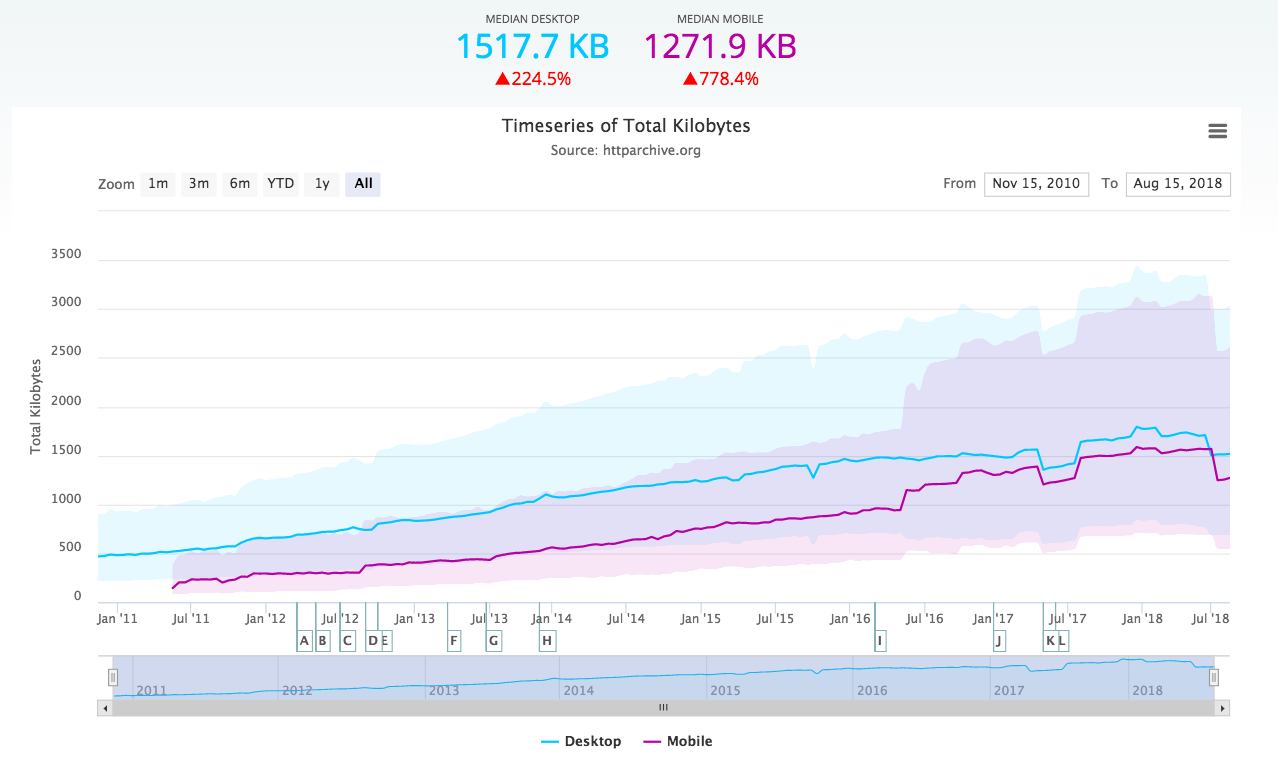
Arguably, there are currently only two superpowers on the planet: the United States and China. Now that the world is growing increasingly dependent on the Internet, how do these two giants stack up online?
We’ve taken a number of Internet-related metrics to compare the two countries, things like the number of Internet users, Internet penetration, the speed of Internet connections, the number of domain names, favorite websites, web browsers, operating systems and more.
Let’s get started!
Internet users
Ten years ago, the United States was by far the largest country on the Internet. That is no longer the case. It’s been pushed into second place by China, with quite some margin.

Together these two countries now make up over 33% of the Internet. China alone makes up 51% of the Asian Internet population.
Internet penetration
The United States has a huge lead over China when it comes to the actual Internet penetration, i.e. the share of its population that has access to the Internet.

An interesting note here is that China has a ton of room to grow, while the United States doesn’t. To give you an idea: If China had the same Internet penetration as the United States, it would have over a billion Internet users.
Internet growth
When it comes to sheer growth, China has been on a tear for the past decade. Its Internet user base grew an incredible 1,767% between 2000 and 2010. The United States more than doubled its Internet population in the same time, but needless to say, wasn’t able to reach those levels of growth. This can be partly explained by the head start the United States already had (a decade ago it was much larger than any other country on the Internet), but China’s growth has nonetheless been spectacular, and doesn’t seem to be slowing down.

In this context, a look back in time is relevant. The United States had 95 million Internet users back in 2000, and now it has 239 million. China, on the other hand, has gone from just over 22 million to 420 million Internet users in the same period of time.
Internet connection speeds
In this area, the United States is far ahead of China. The average connection speed is five times faster in the United States compared with China, indicating that fast broadband connections are in much wider use.

The reason for this difference is clear when you see how connection speeds are distributed. In the United States, 34% of Internet connections are faster than 5 Mbit/s, while in China, only 0.4% are faster than that.

Internet hosts
In terms of servers connected to the Internet, serving content, the United States is way ahead of China. This is not surprising. It should be. The United States has been the leading web hosting nation from the start, and still is. Even people and companies not living in the United States host their websites there.

Yes, these numbers (from the CIA World Factbook) do indeed show that there are 28 times as many Internet hosts (machines) in the United States as there are in China. We’re not sure what methodology was used to collect this data, though, and it may have been affected by China’s careful control of Internet traffic. The US number should be large, though, and the country does have a huge hosting infrastructure, so it’s not entirely implausible.
Top search engine
Google never really managed to land the number one spot in China, and now, with Google having largely stepped back from that market, that will remain the case for the foreseeable future. Instead, China’s local search engine of choice is Baidu, which got its start back in 2000. It’s essentially the “Chinese Google.”
Top websites
The top websites in the United States are all very familiar to the vast majority of the Internet users in the world. It’s not until you look at the top sites for China that you realize that there are huge Chinese counterparts that are not necessarily big anywhere but in China. But on the other hand, with such a huge Internet population in China (not to mention the Chinese-speaking population outside of China), these services can blossom in that market.
Top 5 websites in the United States:
Top 5 websites in China:
- Baidu.com (search engine)
- QQ.com (online community)
- Sina.com.cn (web portal)
- Taobao.com (“China’s eBay”)
- Google.com.hk (Google Hong Kong)
Facebook currently has no chance in China thanks to being blocked. Google’s Chinese (.cn) site is practically closed, but as you can see, its Hong Kong version is still heavily used, enough to land it in the top 5. The fact that Google.cn will redirect users to Google.com.hk surely helps with that.
In general, the so-called Great Firewall of China has created a somewhat on/off relationship with international sites in China. Either you’re allowed in (and play by the rules), or you’re not. There is very little in between. That’s not to discount the success of the Chinese alternatives that currently lead the way in China, it’s just a general observation. It’s a very different market.
Top web browsers
China still has a huge amount of Internet users accessing the Internet with the dinosaur IE 6, which can be a bit confusing when you consider that there are so many free alternatives available (newer versions of IE, Firefox or Chrome, for example). Part of the explanation is available further down under operating systems, and it’s spelled “Windows XP” (which has IE 6 as its default browser).
Top 5 web browsers in the United States:
- Internet Explorer, 47.5%
- Firefox, 25.5%
- Chrome, 14.6%
- Safari, 11.2%
- Opera, 0.6%
Top 5 web browsers in China:
- Internet Explorer, 87.4%
- Chrome, 4.4%
- Maxthon, 3.8%
- Firefox, 3.3%
- Safari, 0.6%
Top web browser version:
- United States: Internet Explorer 8.0, 33.9%
- China: Internet Explorer 6.0, 41.1%
Top operating systems
We reported the other week that Windows 7 had finally overtaken Windows XP in the United States and is now the most popular OS in the country. However, the situation is very different in China, where Windows XP still has a huge lead. In China, approximately 4 out of 5 computers run Windows XP.
Top 5 operating systems in the United States:
- Windows 7, 32.1%
- Windows XP, 31.1%
- Windows Vista, 19.1%
- Mac OS X, 14.9%
- iOS (iPad), 1.2%
Note also that iPad’s iOS has managed to sneak into the top 5 in the United States. (This stat doesn’t include iOS on iPhone or iPod Touch.)
Top 5 operating systems in China:
- Windows XP, 82.2%
- Windows 7, 13.8%
- Windows Vista, 2.7%
- Mac OS X, 0.5%
- Windows 2003, 0.3%
We should point out that these numbers (from Statcounter) are based on Web usage, so they represent computers connected to the Internet, surfing the Web. Very relevant for this survey, in other words.
Domain names
When it comes to domain names, the stats that are usually available are for domain names categorized by country of purchase, not necessarily the country of the purchaser. This means that the United States will be overrepresented since it’s a popular place to register domain names (thanks to the strong US hosting and domain industry).
With that in mind, here are the numbers for generic top-level domain names (gTLDs).

Then we have the country code top-level domain names (ccTLDs), .us for the United States and .cn for China. Something to keep in mind here is that .us hasn’t really been able to establish itself very well in the United States. Instead, .com has dominated, leaving the growth of .us somewhat stunted.

Global share of attack traffic
With “attack traffic,” we mean traffic of a malicious nature, for example attempts to gain access to a computer via various ports, exploiting weaknesses in the OS, etc. This includes so-called port scanning to find potential openings. The United States has the dubious honor of being the number one source of attack traffic in the world. China is third (after Russia).

Conclusion
So, what’s the score once we’ve gone through all of this? A few takeaways:
- China’s Internet user base is bigger, much bigger (1.76x that of the United States).
- The US Internet infrastructure is still way ahead of China’s, at least for end users.
- China has much more potential for growth in spite of already being the largest country on the Internet.
- China’s Internet users run older versions of software than the US Internet users are, at least when it comes to operating systems and web browsers.
- The strong hosting industry in the United States keeps the nation ahead, especially since Internet users from all over the world use its services. (One might ask how long that will last, though.)
So while the United States still has a technological lead in many ways, it’s already been passed by China in terms of people on the Internet, and will continue to fall behind in that department. It’s simple math. China has a much larger population, a much lower Internet penetration, and thus has plenty of room to grow. We’ve examined this potential in the past, especially in view of how much the balance changed on the Internet between 2000 and 2010.
Hopefully the world doesn’t end in 2012, because we’d love to look back at this post a few years from now and see how things have changed. How large and powerful will China get? Will the United States be able to keep its strong position on the Internet? As they say in the movies: To be continued…
Data sources: Internet user numbers from Internet World Stats. Internet connection speeds and attack traffic from Akamai’s State of the Internet Report Q3 2010. Web browser and OS stats from Statcounter. Top sites from Alexa. Internet hosts from the CIA World Factbook.


























